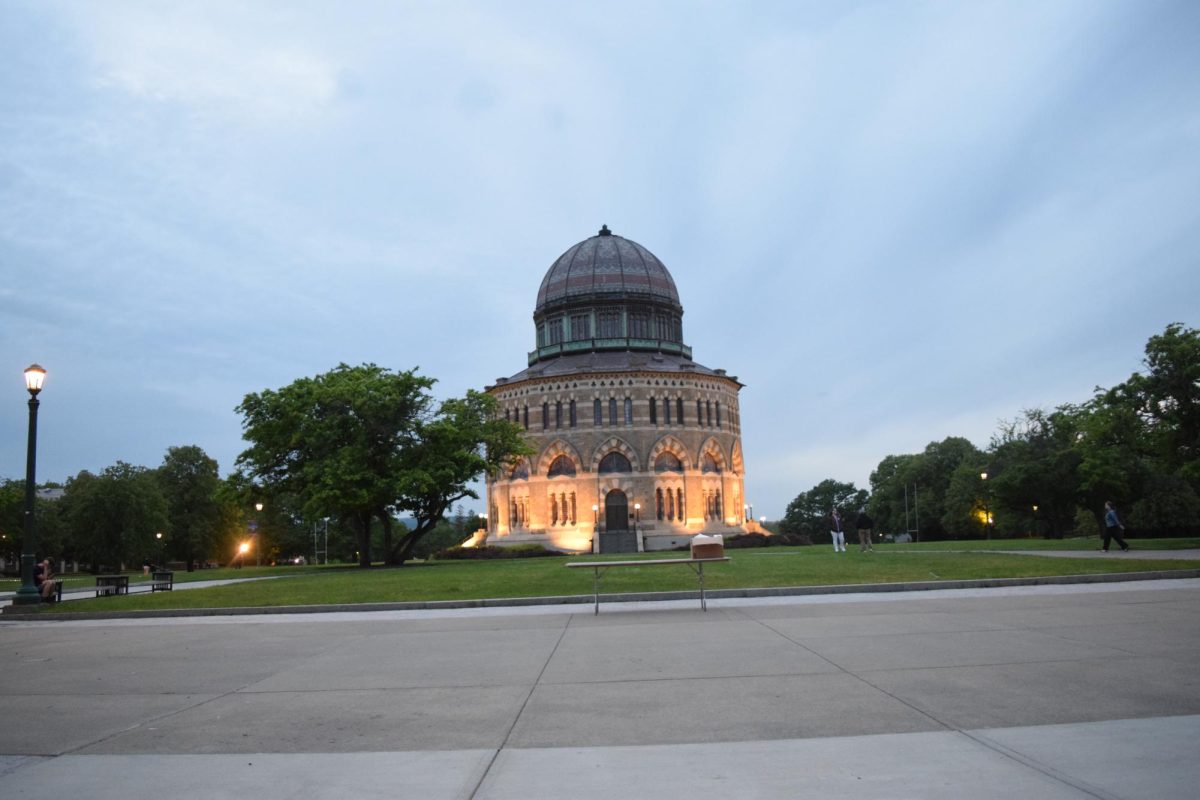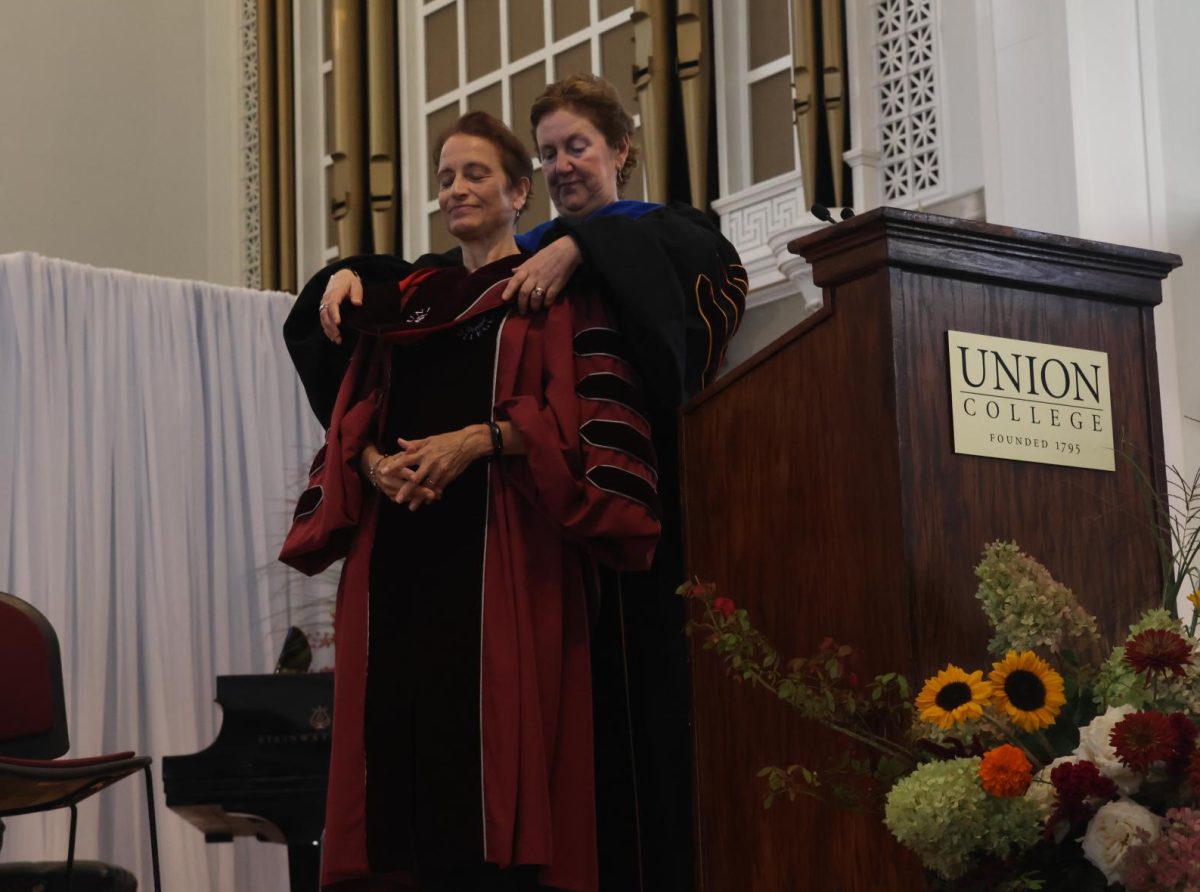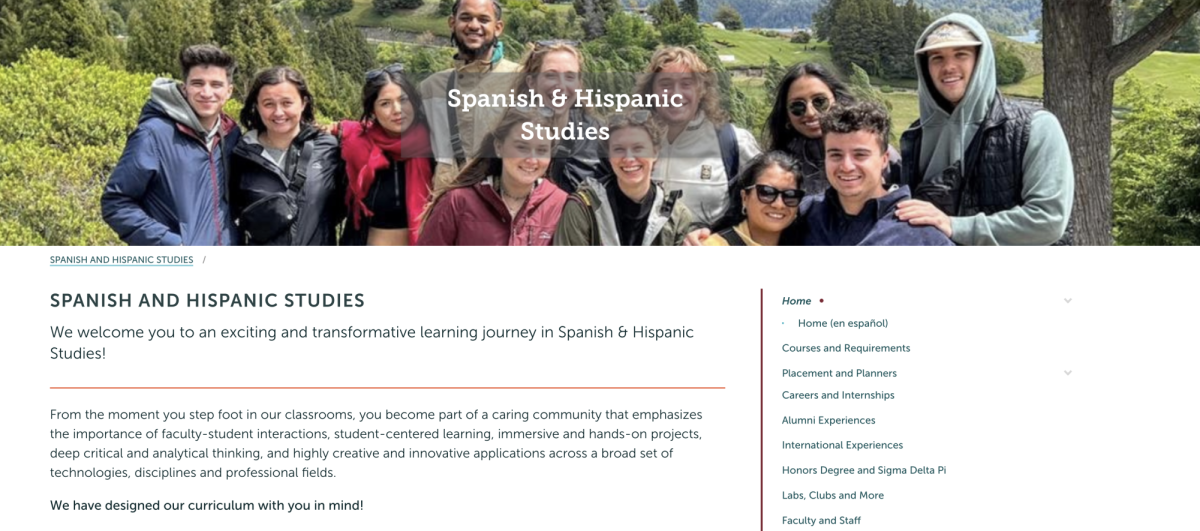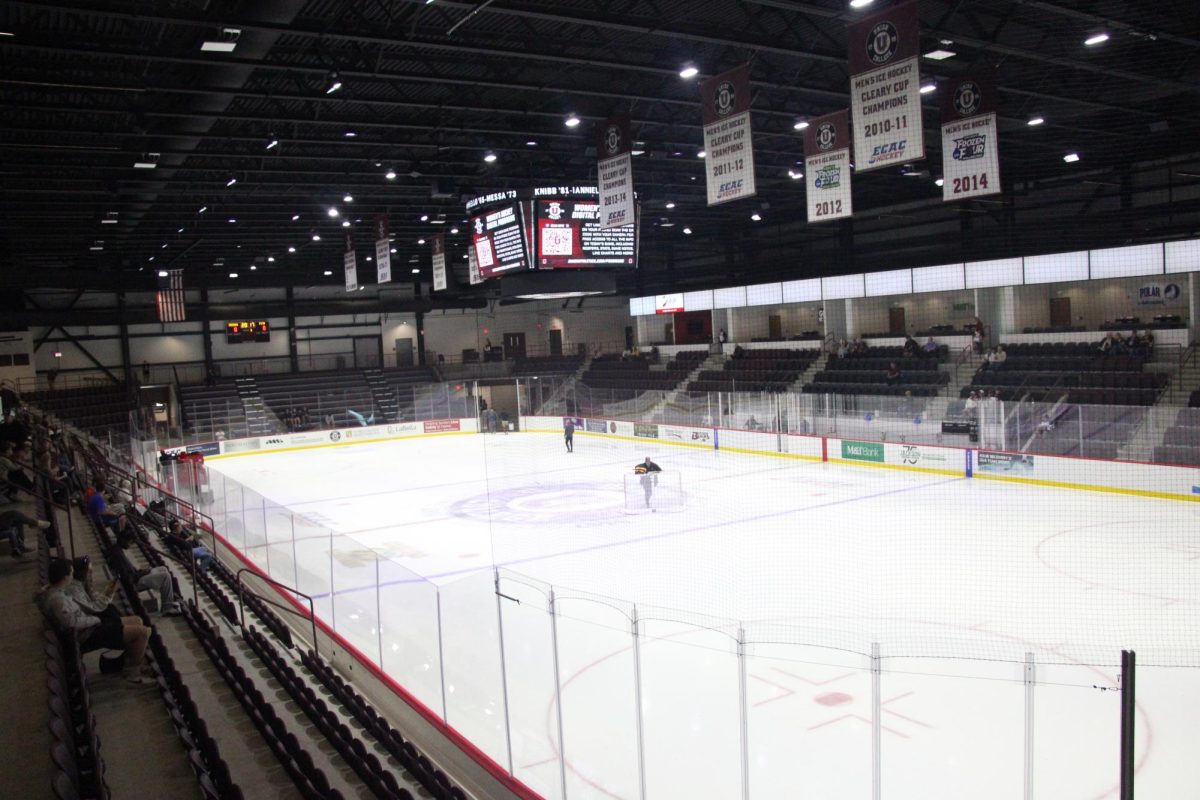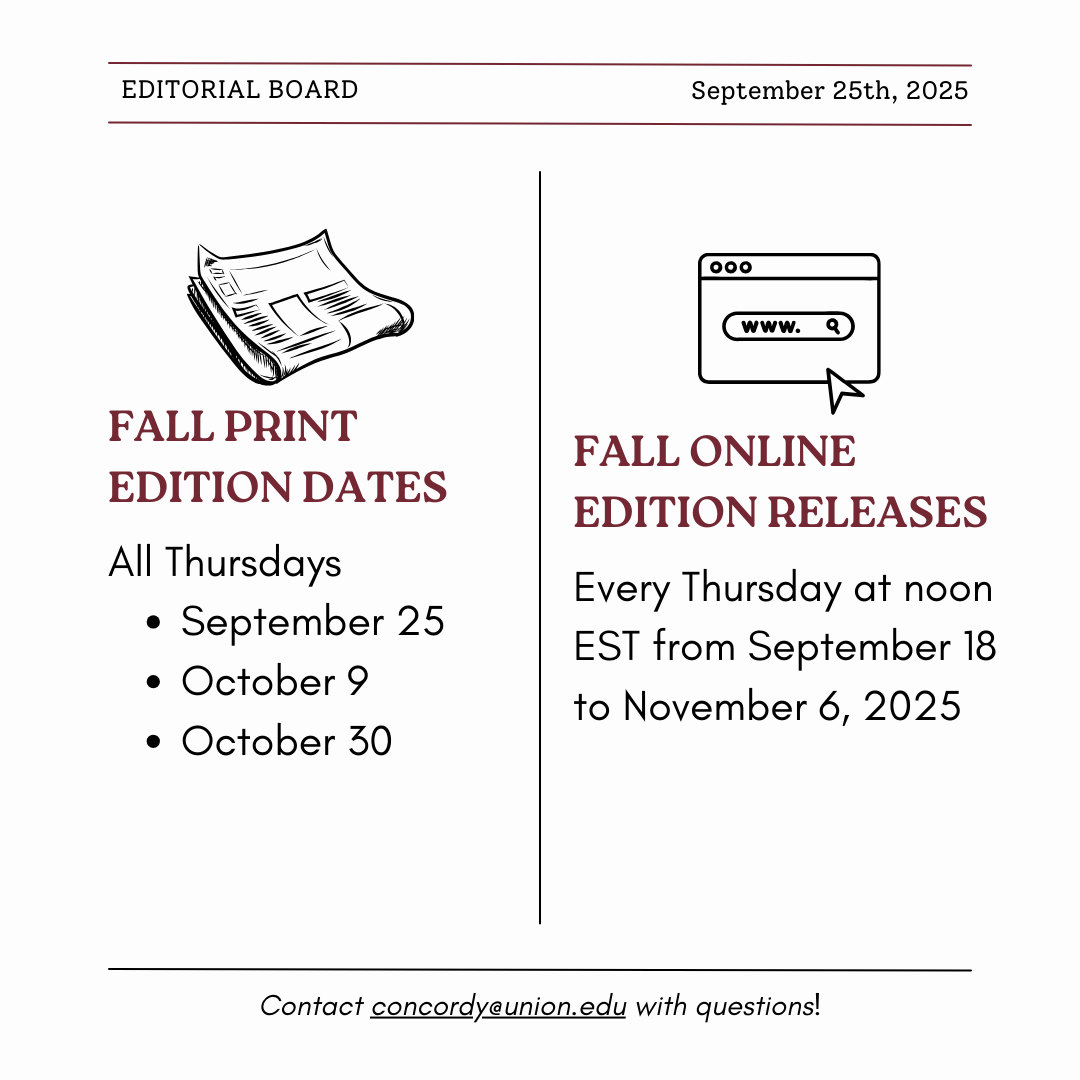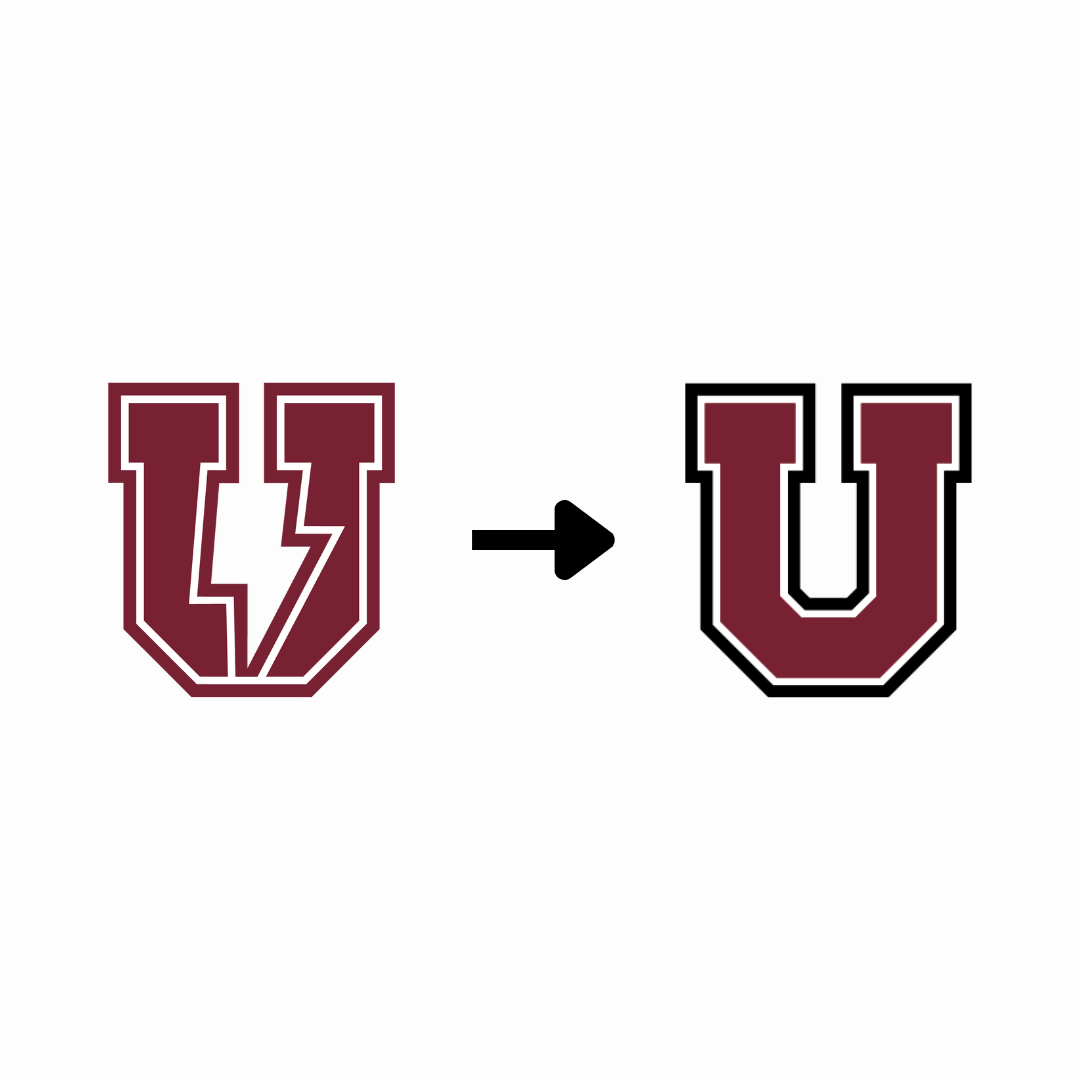Two weeks ago, President Harris sent an email to Union faculty stating that the class of 2029 fell short on enrollment expectations. As a result, the college will need to make fiscal changes to balance its budget. Other colleges, including the University at Albany and RPI, have been facing similar enrollment issues. The Times Union originally reported on Harris’s email, and Concordiensis has spoken to college administrators about its contents.
The college’s preliminary enrollment numbers indicate that Union is “tracking to have around 500 students [for the class of 2029] at this point, which is very similar to last year. For comparison, we were at 550 two years ago. Enrollment news from across the country suggests that a number of peer colleges have experienced similar results,” Matt Malatesta ’91, the VP for Admissions, Financial Aid and Enrollment, told Concordiensis.
Malatesta explained that this drop in enrollment is because “it has been a very challenging year for us in the international space. We are down approximately 40 international students from last year, which is tied, in part, to geopolitical challenges and the changing national dialogue around international education within the United States,” He explained. The college enrolled 75 first year international students in Fall 2024, according to the college’s common data set.
Other schools, including the University at Albany and RPI, are also reporting that fewer international students are enrolling on their campuses in the fall.
This dip in enrollment has financial implications for Union College, President Harris explained to Concordiensis. For example, even though there are less students enrolled, fixed costs such as faculty salaries do not change. Student tuition makes up 2/3rds of the college’s revenue, and with less students, revenues decrease. The college also operated at a $14.1 million budget deficit in the 2023 fiscal year, according to the college’s most recent i990 filing. Harris also told Concordiensis that the college will have a $5.5 million budget deficit next year.
In an email sent to faculty, President Harris “outlined the steps that the board approved the College take to balance the budget in the upcoming fiscal year. These actions are part of a plan to eliminate Union’s structural deficit over the next five years and set the College on a course for long-term success,” Michele Angrist, the Dean of Faculty and Vice President for Academic Affairs, described to Concordiensis.
“Those actions include reducing the College’s contribution to employees’ retirement accounts from its current 11 percent to 8 percent; no pay increases for faculty and staff next year, a 10 percent reduction in non-compensation expenses from current budgeted levels and an increased distribution from the College’s endowment.” Angrist said.
“I anticipate that the 10% reduction in non-compensation spending will affect both department and interdisciplinary studies program operating budgets in academic year 25-26. I will be working with academic leadership to make sure the reduction will have as little effect as possible on the student experience,” Kara Doyle, the Dean of Academic Departments and Programs, told Concordiensis. Doyle said she had not received feedback about how this will impact individual department budgets.
“These were difficult decisions to make, and we are very aware of the pain the compensation actions will cause for some of our outstanding faculty and staff, who are at the heart of the Union experience.” Angrist said.
“I’ve been saying for a long time that change is coming in higher ed, and change is here. I’ve been saying status quo is not stable,” Harris said in terms of these financial decisions. “We have to redouble our efforts.”
Additionally, the college is working to reduce its discount rate, the average amount of financial aid given to students. President Harris described this as “If we have three students here, and we charge each $90,000, we should have $270,000 in revenue. But if they get financial aid, maybe we only get $135,000 in revenue, in which case we’d say we have a 50% discount rate.”
“Over time as the discount rate has been going up, that means even with the same number of students, your net revenue’s going down, and so you have to make these structural changes. We said to the board that we cannot solve that in one year without doing irreparable harm to the school.” Harris said.
In order to decrease the college’s discount rate, “What we’re trying to do is to make Union more attractive to fuller pay students,” Harris explained. “It’s not that everyone’s that’s gotta be one extreme or the other, rich or poor. But if you can find more students who can pay $40,000 instead of students who can pay only $30,000 in your distribution, you’re better off.”
The college is trying to attract fuller paying students by upgrading its engineering facilities, building a new hockey rink, and is considering changes to academic programs to attract more applicants.
Harris, Angrist, and Doyle told Concordiensis that despite these struggles, they still remain optimistic about the college’s future. “We’re ranked in the top 40, our graduates go on to become leaders in their chosen fields, and we’ve had good success with fundraising recently,” Doyle said. “Despite the need to address that budget gap, we think Union has the overall momentum we need to carry us forward.”
“If you don’t make those kind of changes and have those tough conversations, it’s not a good story long term. But it’s not that Union closes anytime soon, we have a $550 million endowment,” Harris said. “So it’s about changing things to get a secure future to happen.”


